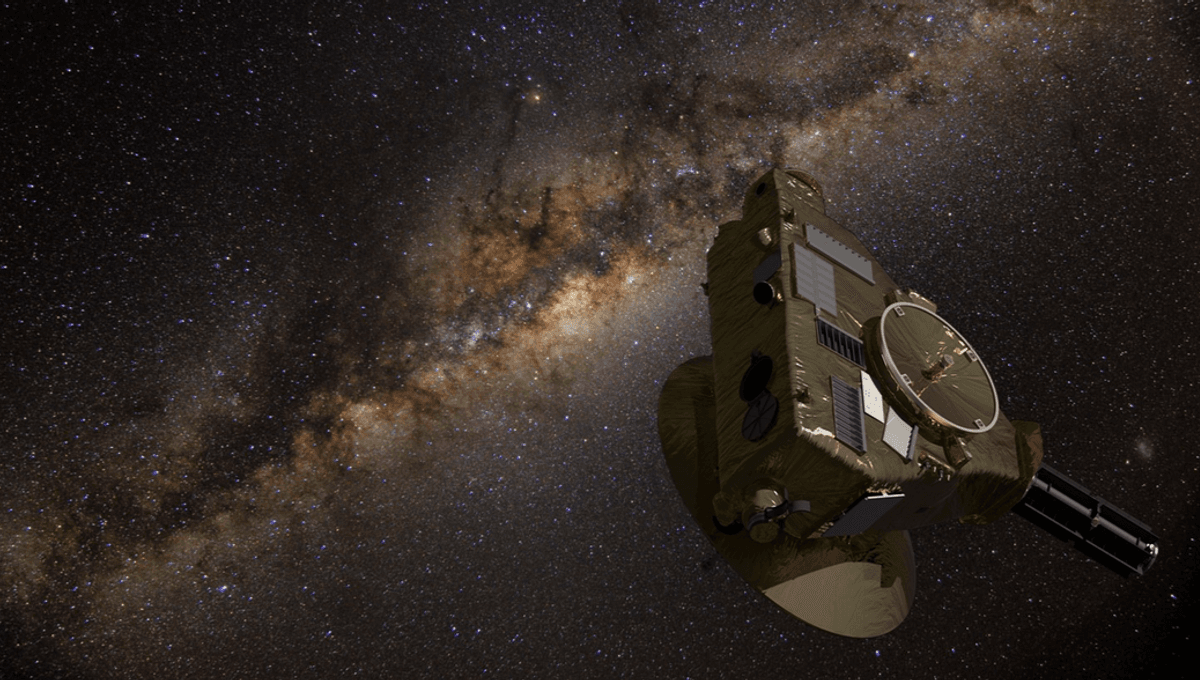
It was the writer Edgar Allan Poe who first proposed a solution to Olber’s paradox: why is the sky dark at night? The reason for the darkness of the night is to be found in the fact that our cosmos has limits, at the very least in time. Since then, astronomers have been searching for another related answer – not why it is dark but how dark it is, and scientists might just have gotten the best measurement of that yet.
The instrument capable of this feat is on board NASA’s New Horizons – the mission that, 9 years ago, flew by Pluto. It is so far from the inner Solar System and its zodiacal dust, that it can get a more precise measurement of the cosmic optical background (COB), the combined light of all the sources of light humans can see in the visible universe.
“If you hold up your hand in deep space, how much light does the universe shine on it?” asked lead author Marc Postman, from the Space Telescope Science Institute in a statement. “We now have a good idea of just how dark space really is. The results show that the great majority of visible light we receive from the universe was generated in galaxies. Importantly, we also found that there is no evidence for significant levels of light produced by sources not presently known to astronomers.”
Asteroid collisions and comets have peppered the inner Solar System with dust, and sunlight shining on it has added some celestial light pollution to the measurement of the COB. Different approaches have been used to measure this, but to do so from inside the Solar System is difficult. New Horizons is 7.3 billion kilometers (4.5 billion miles) away from Earth, where the dust is not a problem.
“People have tried over and over to measure it directly, but in our part of the solar system, there’s just too much sunlight and reflected interplanetary dust that scatters the light around into a hazy fog that obscures the faint light from the distant universe,” added co-author Tod Lauer, a New Horizons co-investigator and astronomer from the National Science Foundation NOIRLab. “All attempts to measure the strength of the COB from the inner solar system suffer from large uncertainties.”
The latest measurements take advantage of new techniques to better estimate the dust not in the Solar System, but in the Milky Way, so that diffuse starlight from our galaxy doesn’t erroneously add to the total for the COB. The results tell us where the visible light comes from. There are no sources that are unexpected.
“The simplest interpretation is that the COB is completely due to galaxies,” Lauer said. “Looking outside the galaxies, we find darkness there and nothing more.”
“This newly published work is an important contribution to fundamental cosmology, and really something that could only be done with a far-away spacecraft like New Horizons,” said Alan Stern, principal investigator on New Horizons. “And it shows that our current extended mission is making important scientific contributions far beyond the original intent of this planetary mission designed to make the first close spacecraft explorations of Pluto and Kuiper Belt objects.”
This brings into question an important claim from the last decade: how many galaxies are out there in the visible universe? An estimate put the number at 2 trillion, 10 times more than the previous one of 200 billion, but New Horizons data didn’t support that. The new work is consistent with the 2021 data and with an even smaller uncertainty.
The study is published in The Astrophysical Journal.
Source Link: New Measurements Of Universe's Darkness Suggest Fewer Galaxies Are Around